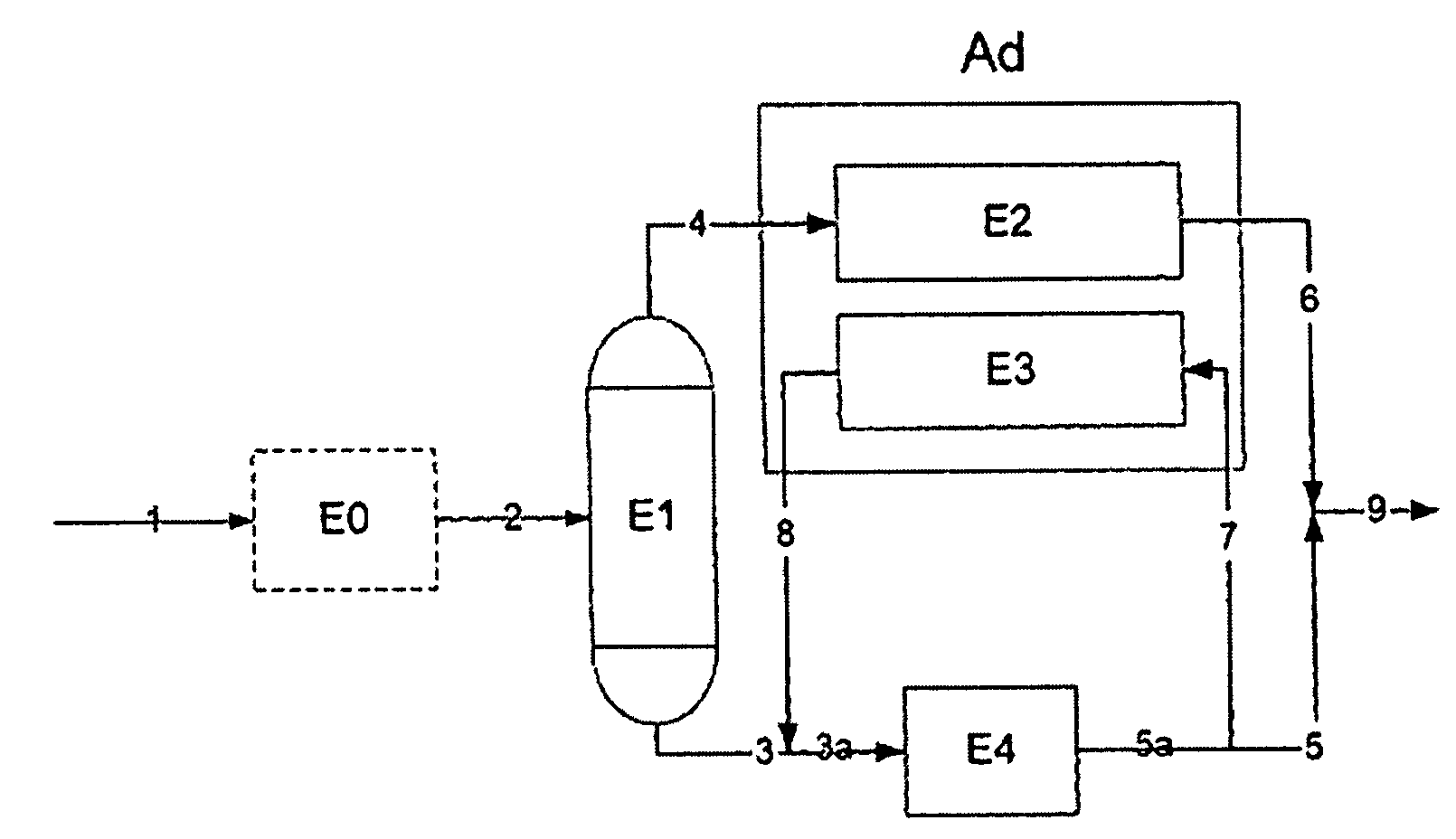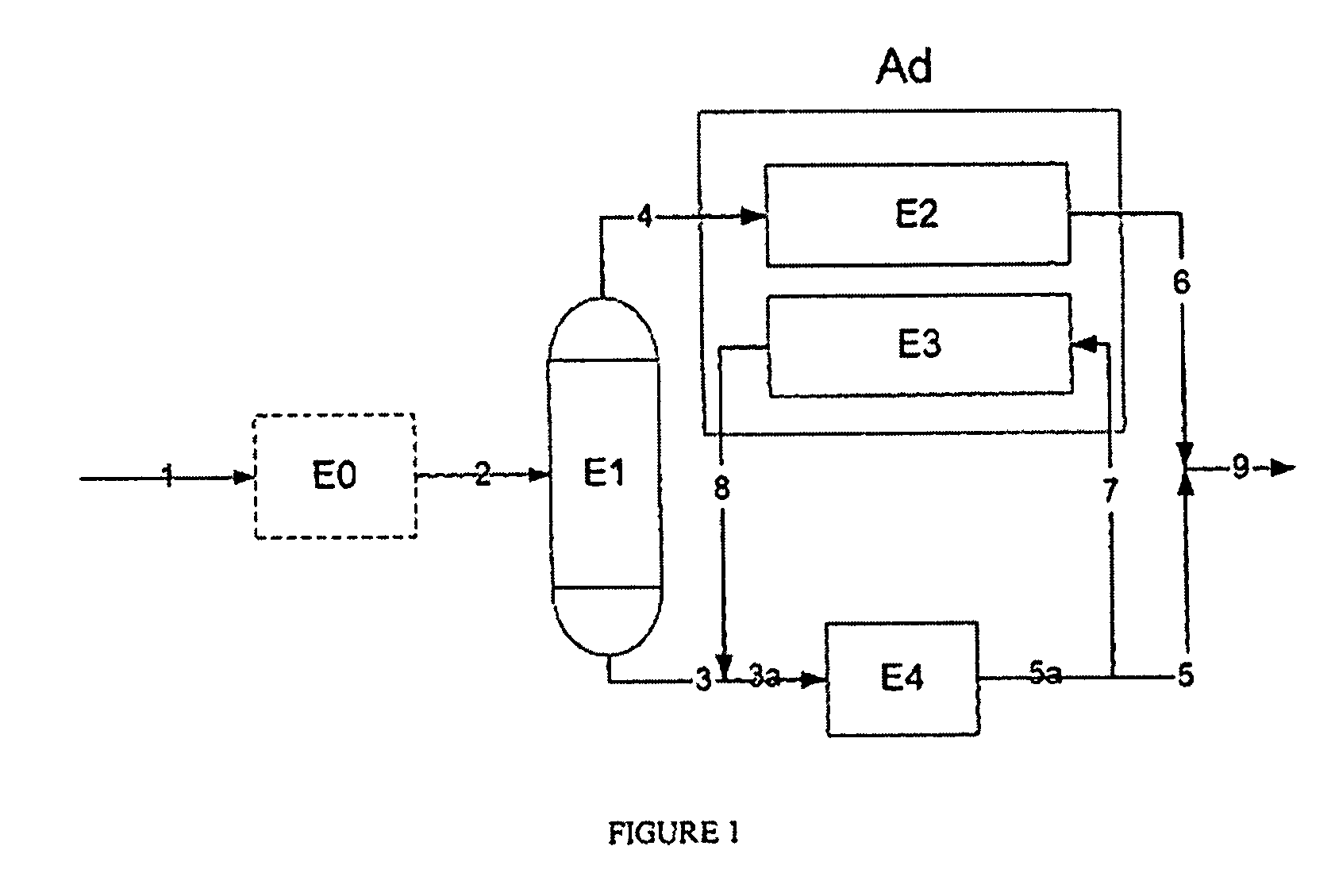Process for the desulfurization of gasolines comprising a desulfurization by adsorption of the light fraction and a hydrodesulfurization of the heavy fraction
a technology of gasoline and desulfurization, which is applied in the petroleum industry, hydrocarbon oil treatment, refining to eliminate heteroatoms, etc., can solve the problems of reducing the quantity of reformate available for use in petrochemistry, limiting the advantage, and affecting the efficiency of the gasification process, so as to reduce the octane loss
- Summary
- Abstract
- Description
- Claims
- Application Information
AI Technical Summary
Benefits of technology
Problems solved by technology
Method used
Image
Examples
example
[0096]The nonlimiting example that follows makes it possible to better understand the advantages of this invention.
[0097]A gasoline I that is representative of a catalytic cracking gasoline is synthesized by incorporating the proportions of paraffins (n-heptane, isooctane), olefins (1-hexene, 1-dodecene), aromatic compounds (toluene, metaxylene) and sulfur-containing compounds (thiophene, benzothiophene) that are usually encountered in a cracking gasoline.
[0098]Table 1 provides the characteristics of gasoline I.
[0099]
TABLE 1CompoundMass (g)% by WeightnC7195.624.0Isooctane142.817.51 Hexene203.925.01-Dodecene102.012.5Toluene8.31.0Metaxylene162.619.9Thiophene0.110.0150ppm of SBenzothiophene0.510.06150ppm of S
[0100]A gasoline II that reproduces the proportions of paraffins (n-heptane), olefins (1-hexene), aromatic compounds (toluene) and sulfur-containing compounds (thiophene) of the light fraction obtained after a fractionation at 90° C. of the gasoline I has been synthesized.
[0101]Tab...
PUM
| Property | Measurement | Unit |
|---|---|---|
| boiling point | aaaaa | aaaaa |
| boiling point | aaaaa | aaaaa |
| temperature | aaaaa | aaaaa |
Abstract
Description
Claims
Application Information
 Login to View More
Login to View More - R&D
- Intellectual Property
- Life Sciences
- Materials
- Tech Scout
- Unparalleled Data Quality
- Higher Quality Content
- 60% Fewer Hallucinations
Browse by: Latest US Patents, China's latest patents, Technical Efficacy Thesaurus, Application Domain, Technology Topic, Popular Technical Reports.
© 2025 PatSnap. All rights reserved.Legal|Privacy policy|Modern Slavery Act Transparency Statement|Sitemap|About US| Contact US: help@patsnap.com


